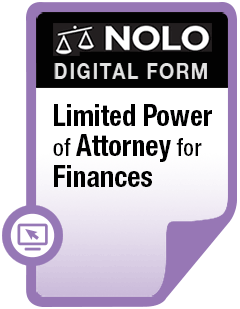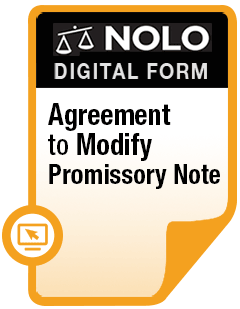Ten things you need to know before getting a mortgage loan.
Getting a mortgage isn't too difficult but will involve some effort. If you plan on taking out a loan to buy a home sometime soon, here are ten things you need to learn about and do to ensure that the transaction goes smoothly and that you fully understand what you're getting into.
1. Check your credit scores.
Lenders check your credit scores when you apply for a mortgage loan. You don't want to be unpleasantly surprised by what they find out.
Your credit score is a numerical calculation designed to indicate your creditworthiness. There are different types of credit scores, like FICO and VantageScore. A basic FICO score or VantageScore ranges from 300 to 850. The closer your score is to 850, the better you'll look in the eyes of the lender. These companies offer various scoring formulas that emphasize different aspects of your credit, so you'll likely have more than one score.
Lenders often get a tri-merge or bi-merge report (a credit report that combines information from three or two credit bureaus), including a credit score from each bureau. These scores are often based on a FICO model.
You can pay to find out your scores, including those most widely used in mortgage, auto, and credit card lending. But your lender might use a different score than the versions you receive from a credit scoring company's website (remember, there are many different types of scores) or another type of credit score altogether.
You can also contact the three major credit reporting agencies (Experian, Equifax, and TransUnion) but these companies might not give you the exact credit score creditors will use to evaluate you. Still, you'll get an idea of where you fall in terms of credit risk if you get your scores from a credit scoring company or the credit reporting agencies.
2. Review your credit reports.
It's also a good idea to review your credit reports. Fortunately, under federal law, credit reporting agencies must give you a free copy of your credit report once every 12 months if you ask for it. And the credit reporting agencies now provide free weekly reports online, a service they started during the COVID-19 pandemic. To get your free report from any (or all three) of the major credit reporting agencies (again, Experian, Equifax, and TransUnion), go to AnnualCreditReport.com.
After you get the report, review it for errors and then take steps to correct any mistakes or outdated information and add positive information. Your credit score is based on what's in your credit reports. Incorrect information can hurt your score. Remember, this isn't just a case of wanting a lender to approve or disapprove you for a loan—lenders use your credit history to determine whether you should be charged a higher interest rate, too.
3. Learn about different types of mortgages.
It's worth getting educated about the different types of mortgages, like conventional, FHA, VA, and others, available before you start shopping for a loan.
4. Figure out whether you want a fixed rate or an adjustable rate loan.
If you select a fixed-rate mortgage, the amount you'll pay in total for principal and interest remains the same over the entire mortgage term because the interest rate stays the same. Although you slowly pay off the principal, your monthly payment will normally be set at the same amount each month, based on a mathematical process called "amortization." However, this payment could go up if there's an increase in your property taxes or homeowners' insurance, and those items are escrowed and paid as part of your mortgage payment.
With an adjustable-rate mortgage (ARM), the rate will change occasionally based on the economy's interest rates. Your monthly payment will increase if rates go up and go down if rates fall.
Another option is a hybrid ARM, which has a fixed rate for a certain amount of time, like three, five, seven, or ten years. After the fixed-rate period ends, the interest rate switches to an adjustable one and remains variable for the loan term's remainder.
5. Determine what mortgage term you want.
A mortgage term (how long it takes to pay off the loan) is typically 15 or 30 years, though it could vary. If you take out a 15-year mortgage, you'll pay off the loan much quicker (half the time) than with a 30-year loan, but the monthly payment is higher.
The advantage to choosing a 15-year mortgage is that you will save thousands of dollars in interest, but the higher monthly payment isn't affordable for many borrowers.
6. Find out how much home you can afford.
Lenders will ordinarily recommend that you look at homes that cost no more than around three times your annual household income, assuming you expect to make a 20% down payment and don't have too much other debt.
Another basic rule for determining how much home you can afford is that your monthly mortgage payment shouldn't be more than around 28% of your gross (pre-tax) monthly income. These figures, though, might not accurately reflect your own financial and personal situation.
7. Get prequalified.
Even if you think you can afford a specific loan amount, that doesn't mean a lender will agree. One way to get an idea of how much a lender will actually lend to you is to get prequalified for a mortgage.
To do this, you'll have to provide your prospective lender with some information about your income, assets, and debts. Based on this information, the lender will then tell you how much it might lend to you. The lender won't guarantee you'll be approved for this amount, but you'll get a ballpark idea of how much you can qualify for when shopping for a new home.
8. Shop around before you apply for any mortgage loan.
Before applying for a mortgage, shopping for the best home loan deal available is a good idea. You'll need to figure out where you want to get your loan (through a broker or by going directly to the bank, for example) and keep your eyes open for the best interest rate and lowest closing costs.
Always consult several sources to find the best mortgage deal you can get.
9. Fill out an application.
Once you're ready to finalize the mortgage deal, you must fill out an application. The application will ask for information about you, your finances, and the details of your potential mortgage.
Be sure to take your time and be honest when you fill out the application. You'll seriously jeopardize your chances of getting the mortgage if you include inaccurate or false information in the application. Plus, lying on an application constitutes mortgage fraud.
10. Understand the mortgage you've selected by carefully reviewing the Loan Estimate and Closing Disclosure forms.
If you apply for a mortgage on or after October 3, 2015, the lender must deliver or mail to you a form called a "Loan Estimate" no later than the third business day after receiving your mortgage loan application. You'll also get a user-friendly "Closing Disclosure" three business days before you close on the mortgage loan.
Be sure to review these forms carefully and ask your lender any questions before you go to the closing table.
Get More Information About Buying a Home
For a guide to help you select the right house, mortgage, agent, inspections, and much more, get Nolo's Essential Guide to Buying Your First Home by Ilona Bray and Marcia Stewart (Nolo).
Talk to a Lawyer
Need a lawyer? Start here.
How it Works
- Briefly tell us about your case
- Provide your contact information
- Choose attorneys to contact you
- Briefly tell us about your case
- Provide your contact information
- Choose attorneys to contact you



